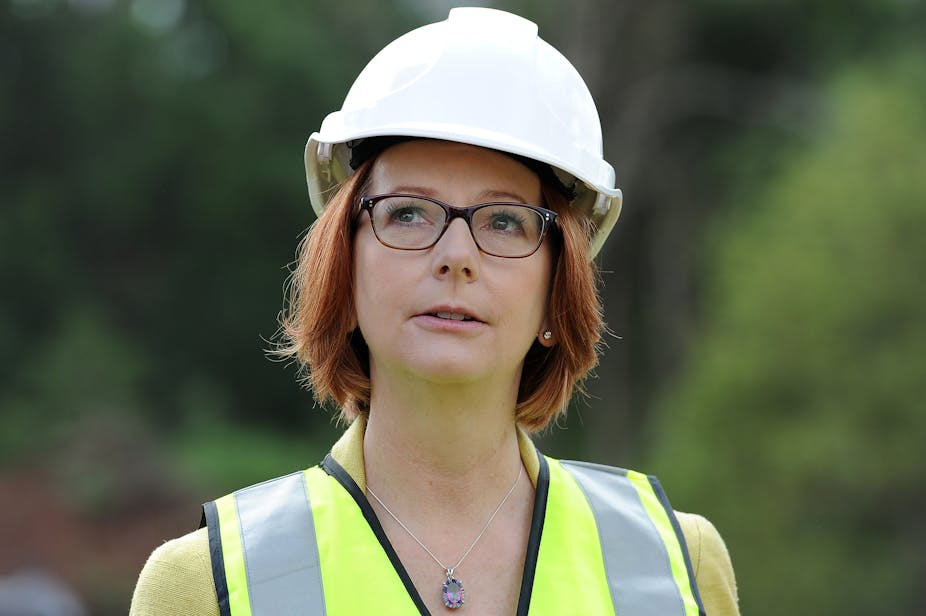If this remarkable week in federal politics has shown us anything, it’s the relationship between politician, party, and public is more complex than ever.
These events put to the test competing models for party democracy in Australia: direct communication with voters, and representative relationships between the political elite itself.
Thursday’s leadership-spill-that-wasn’t is a high profile example of the tension between one prospective leader with strong public support, but little party support (Kevin Rudd), being touted against another with weak public support, but stronger party support (Julia Gillard).
Similarly, lost in the “NSW Inc.” spillover that derailed Nationals hopeful Richard Torbay’s tilt at Tony Windsor’s federal seat of New England was the little noted fact that Torbay had competed in an open primary contest to win the pre-selection for the Nationals.
The Nationals now appear set to parachute in a high-profile candidate, such as Barnaby Joyce, to paper over the embarrassment. While this is clearly a reaction to the shame of having a star recruit appear alongside hated ALP power brokers at Independent Commission Against Corruption, it’s interesting how quickly the much mooted grassroots democratic pre-selection model is shucked when political expedience is required.
In light of this, the Gillard-Rudd leadership tension demonstrates the state of flux our parties are in. To a large extent, Australian parties remain locked in an 18th century political framework. This model meant representatives were needed to act on the public behalf from a great distance with imperfect communication between people and politicians.
Parliament, and the electoral system that supports it, emerges from a largely pastoral period of history, when large tracts of land and local communities dominated political life. Allowing elected elites to make decisions about the form of government based on their own assessments was thus a necessity.
In contrast to this model, leaders like Rudd (and Malcolm Turnbull on the other side of the chamber) have a political legitimacy that relies on popular acclaim. Comparative “outsiders” in their parties, their leadership credentials rested on their capacity to remain popular with the general public. While this has aspects of presidentialism in its focus on an individual’s role as the apex of the power pyramid, it also recognises the much more visible nature of politics in the modern age.
Today’s political elites are able to engage in direct, unfiltered communication with their supporters. It’s not surprising that both of these figures have always been highly engaged with social media, allowing them to communicate with both traditional media gatekeepers (journalists), as well as personal constituencies.
By contrast, for the current prime minister, her lack of popularity overshadows personal abilities that are appreciated by her parliamentary colleagues. Her pragmatic approach to policy making that focuses on achieving the possible, even if that sacrifices more aspirational policy goals, is unappreciated by the electorate.
Without popular acclaim, Gillard lacks the perception of legitimacy that would be more likely to keep the media’s constant negative coverage of her premiership in check. In short, if she were more popular, the media’s current tendency to “hunt in packs” (as former UK prime minister Tony Blair observed) would be restrained.
For Rudd, the substitution of popular for peer support failed to regulate his expansive policy drive. A man with impressive amounts of energy and broad policy vision, his term as leader generated a blizzard of policy reviews and inquiries, but limited outcomes.
Driven by a continual engagement with the public, he never shifted from “campaigning Rudd” to “governing Rudd”.
While these two modes of political behaviour are linked, there are clear differences between them. The work of government is more time-consuming, slow, and dependent on the support of others than the work of the campaign trail, where issues arise quickly, require responses and then fade into the background.
Leaders who are more reliant on their parliamentary peers are therefore grounded in the mundane policy processes of the cabinet and backbench. They need to include people and take them with them on the policy journey.
Modern political leadership requires a balance between the campaigner and the governor, someone missing from the successive leadership contests we’ve seen so far. As successive Australian governments have continued to embrace the “permanent campaign” model of government, the ability to clearly switch between these two very different political states has been eroded.
In the absence of this clear separation, leadership increasingly demands individuals who can exhibit a range of talents that goes well beyond the capacity of even the most rare of specimens. In this context, is it any wonder Australian politics has seen three leadership challenges in as many months?

